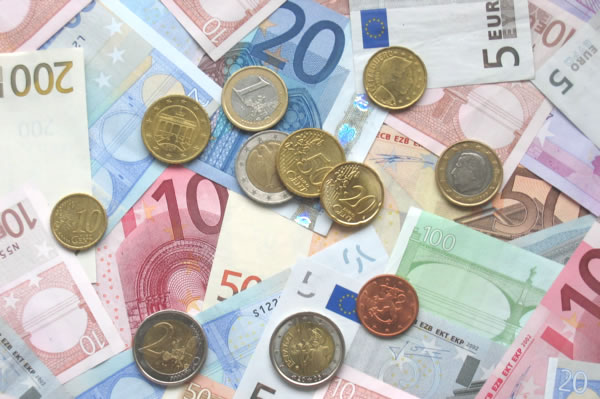JAN. 26, 2015 | The DOW is at 18,000. Wait, the Dow is at 17,200. What now, it’s back close to 18,000. Look again and low 17,000s appear to be the target. We experienced this type of rollercoaster ride just about every week in January. It’s up. It’s down. In short time frames, there were seemingly big swings. What happened?
 Quantitative easing (QE) – buying back of government bonds to stimulate the economy – reared its head again, but this time in the Eurozone. QE appeared to have worked in the countries – USA, the U.K. and Japan – that used it to boost their economies after the global collapse in 2008. The euro, a 19-nation based currency, chose a different route. First, the rules governing the euro are just barely over 10 years old and many of the more difficult decisions untested. The route chosen was to allow each country’s government the primary authority to do what it could to stimulate their individual economy. Austerity was predominant.
Quantitative easing (QE) – buying back of government bonds to stimulate the economy – reared its head again, but this time in the Eurozone. QE appeared to have worked in the countries – USA, the U.K. and Japan – that used it to boost their economies after the global collapse in 2008. The euro, a 19-nation based currency, chose a different route. First, the rules governing the euro are just barely over 10 years old and many of the more difficult decisions untested. The route chosen was to allow each country’s government the primary authority to do what it could to stimulate their individual economy. Austerity was predominant.
Over the last six years, the European Central Bank (ECB), or the “Federal Reserve” of the euro, exhausted just about every option, including buying government bonds from Greece, Italy, and Spain on a very small scale. On Jan. 22, ECB President Mario Draghi overcame opposition on the central bank’s governing council. He unveiled a plan to buy government bonds as part of an asset-purchase program worth about 1.1 trillion euros ($1.3 trillion U.S. dollars).
In anticipation of the event, the euro fell to the lowest level against the U.S. dollar in a decade. Although stimulus usually is associated with inflation, currently in Europe, deflation is the greater risk. With the waterfall like tumble of the euro, even stable Switzerland had to shift. The Swiss had artificially maintained the Swiss franc at 1.2 euros for the past three years. This abrupt disruption in monetary exchange from a stable country and the unknowns and fears of QE exacerbated the already questioning, fragile global markets.
Will quantitative easing work in the Eurozone? The answer is still forthcoming, and it may be years off. Was there any fundamental economic reason for all the volatility that January experienced? The facts do not substantiate any.
There is another answer to the volatility question that makes some sense. I got this quote from Bob Veres, the editor of Inside Information, a professional financial planning magazine, “Hot money traders dislike any kind of surprises, and they hit the “sell” button whenever they’re startled by news that they didn’t anticipate. Then they wait until they have a better understanding of what’s going on. And, since these short-term traders make up a majority of all the actual buys and sells, the markets trade lower even though no fundamental economic reason exists for them to.” We have experienced and documented this reality in the past.
What may we “feel” from the ECB’s quantitative easing? The dollar is strong and just got stronger. This will have an impact on our exports. European companies will be slightly more competitive on the global markets. These facts by themselves are not bad, and we’ll learn over time the actual correlation if any with our lives.
An interesting lesson is to understand the difference between short-term headline moves in the market and long-term fundamental shifts. Quantitative easing is most likely a long-term fundamental shift. The Swiss central bank no longer supporting the franc against the euro is a short-term headline. What if any major changes occurred in the business operations or profitability of U.S. companies due to these adjustments in currency values overseas?
The markets will continue to be volatile. A broadly diversified portfolio with quality stocks and bonds will abate some of the volatility, and this has proven to be the best approach over time. If the roller coaster effect of the daily stock market swings upset your stomach, get off the rollercoaster. Do not look at the stock prices or your portfolio values daily. A good solution may be to take a trip to Europe.
Sources:




 We Can Do Better, South Carolina!
We Can Do Better, South Carolina!
























